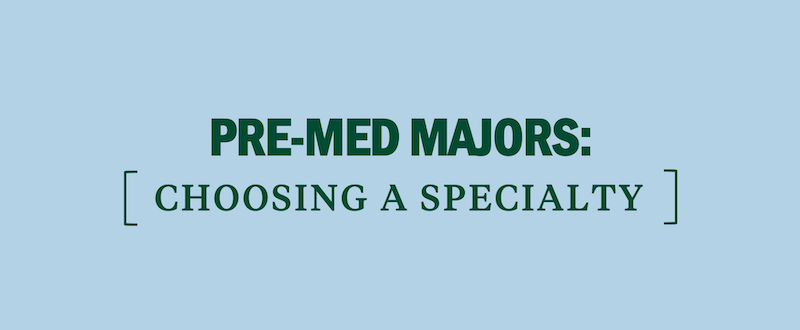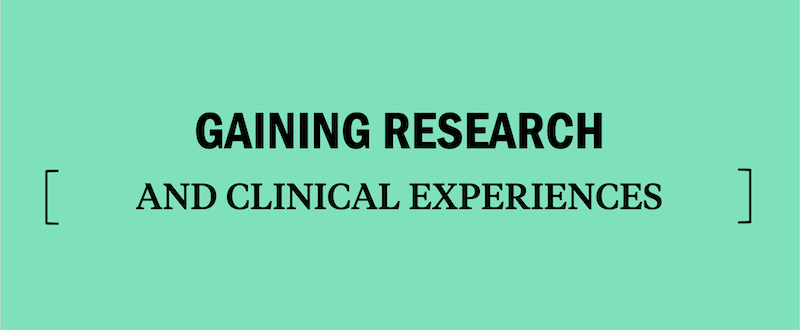Boston University School of Medicine Requirements, Tuition, and More
We’re covering everything you need to know as you consider applying to Boston University School of Medicine. You’ll learn about acceptance rates, application deadlines, average MCAT scores, tuition, curriculum, and more.
[ RELATED: MCAT Prep Courses Near Boston, MA ]
All About Boston University School of Medicine
Founded in 1848 as the New England Female Medical College, the institution was the first in the world to formally educate women. The school, which is also the first in the United States to award an MD to an African-American woman (1864), was renamed Boston University School of Medicine in 1873. Today, the school has 727 full-time medical students and 1,926 full-time faculty on staff.
Located in the South End neighborhood of Boston, Boston University School of Medicine (BUSM) operates the largest 24-hour Level I trauma center in New England. The school is also affiliated with the Kaiser Permanente Collaboration in California and more than 20 other partners. Additionally, BUSM has the largest network of regional community health centers and is home to the Framingham Heart Study—an ongoing study which began in 1948, laying the foundation for all cardiovascular disease studies.
In 2018, BUSM garnered more than $648 million in research awards in 21 basic science and clinical science departments. As of 2019, the school boasts one of the largest and most rapidly growing research programs among US medical schools, operating more than 640 fully-funded programs.
Though the institution is large, students benefit from a tight-knit community. Most first-year medical students choose to live in the Medical Student Residence. The $33 million project, completed in 2012, contains 104 two-bedroom suites that house 208 medical students. Designed to enhance student-life experiences, the building is only a short walk from the core BUSM educational facilities.
In addition to finding support amongst their peers, students may take advantage of programs offered by the Office of Student Affairs and Enrichment. These services include mentoring, career counseling, and participation in student government. Students who want to get involved in groups outside of the classroom will benefit from more than 30 national, regional and local groups, and more than 20 service-learning groups.
Because BUSM is committed to innovation and improvement, the curriculum is ever-evolving to reflect changes in technology, science, and culture. The school’s Clinical Skills Center also plays a large role in students’ education. There, students work with faculty and patients as they hone their physical exam skills and prepare for the USMLE clinical skills exam.
“My favorite part about Boston University School of Medicine is the community. Everyone, including students, professors, doctors, etc., was handpicked because we all share the common goal of serving others, especially the underrepresented and disadvantaged. This passion is manifested in so many different ways, and our school feels like one big supportive family. Definitely grateful to find my perfect fit for medical school.”
The Curriculum at Boston University School of Medicine
The first-year curriculum at BUSM includes an early clinical experience, but is mainly steeped in foundational science coursework. During this time, students attend lectures and collaborate in small groups as they work through courses in gross anatomy, genetics, neuroscience, and others. This coursework lays the foundation for the clerkship curriculum of years three and four.
To enhance the first-year experience, the Office of Enrichment in Academic Affairs provides non-graded experiences and a variety of programs. These include The Healer’s Art, Introduction to Surgery, Medical Spanish, and many others.
The second year of study consists primarily of an integrated organ system-based course called Disease and Therapy. This course brings foundational science and clinical faculty together to teach, lead discussions, and mentor students as they work with patients. Two additional courses, Introduction to Clinical Medicine 2 and Integrated Problems 2, follow.
The third-year curriculum consists of core clinical experiences that cover ambulatory and inpatient settings. Student responsibility increases gradually. Eventually, they become proficient at history taking, physical examinations, assessment, testing, and more. During this stage, students work with residents and physicians and join major teaching conferences in each clinical discipline.
During the fourth year, students take elective courses and complete one or more sub-internships—the latter of which is designed to ease them into postgraduate training. Sub-internships give students the same experience as full interns, but provide them with more supervision and a reduced patient load.
Those looking to get a jumpstart on their medical career will benefit from BUSM’s alternative pathways programs which include:
Early Medical School Selection Program – students from a consortium of colleges—including Clark-Atlanta, Dillard, Hampton, Morehouse, University of Texas at El Paso, and others—may be eligible to apply for early admission to BUSM during their sophomore year.
Seven-Year Liberal Arts/Medical Education Program – this program is available to high school students who are in exceptional academic standing. These students can obtain a dual baccalaureate and medical degree in seven years.
In addition to the MD tracks, the school offers several dual-degree programs:
MD/MBA – this joint degree, offered through BUSM’s partnership with BU’s Questrom School of Business, is ideal for those interested in the business aspects of medicine.
MD/MPH – this five-year program, offered through The University of Texas School of Public Health, is ideal for those interested in community-based health programs, health policy development, and healthcare administration.
MD/MSCR – the Doctor of Medicine and Master of Science in Clinical Research dual-degree program is designed for students interested in careers in academia or in the pharmaceutical and biotechnology industries.
MD/JD – this six-year program is ideal for students interested in medicine and its legal aspects. Graduates of this program will be eligible to practice both law and medicine.
MD/OMFS – the six-year MD-Integrated Oral and Maxillofacial Surgery degree combines a medical degree with clinical surgical training and research in hospital and dental settings.
How has Boston University School of Medicine Made an Impact?
After nearly two centuries in the field of medicine, it should come as no surprise that BUSM has made an impact. Among its contributions are:
- First institution in the world to formally educate women
- First institution to graduate an African-American female physician
- Founded the nation’s first combined cancer research and teaching laboratory
- Developed the nation’s first academically affiliated home medical service
- Created the first hospital specifically designed for teaching
Notable Programs at Boston University School of Medicine
Boston University School of Medicine: Enrollment, Acceptance, Tuition, and more
The entering class of 2019 has 160 students.
How expensive is tuition at Boston University School of Medicine?
The cost of tuition is $60,864.
When is the application deadline for Boston University School of Medicine?
Here is the application cycle for BUSM:
June: AMCAS application submission opens
July-January: Applications reviewed by the admissions committee and invitations to interview extended
August-February: Interviews conducted
November 1: AMCAS application deadline
November-June: Merit scholarships awarded to accepted applicants
December 1: BCM supplemental application and payment due
April: Second Look event for accepted applicants
April 30: Deadline for all applicants to accept a single offer of MD admission
Mid-July: Orientation begins for the entering class
Boston University School of Medicine recruits on a rolling basis. The application fee is $110.
Boston University School of Medicine – Residency Program Match Rates and Locations
BUSM surveys its students who participate in program matching. The institution’s most recent report suggests that 91 percent of students matched to one of their top four choices, and 94 percent were satisfied or very satisfied with the results of the match.
The most popular programs that students in the Class of 2019 matched with were in the following programs:
- Internal Medicine: 29
- Emergency Medicine: 23
- Surgery-General: 19
- Pediatrics: 17
- Anesthesiology: 10
- Family Medicine: 10
- Dermatology: 9
- Psychiatry: 9




